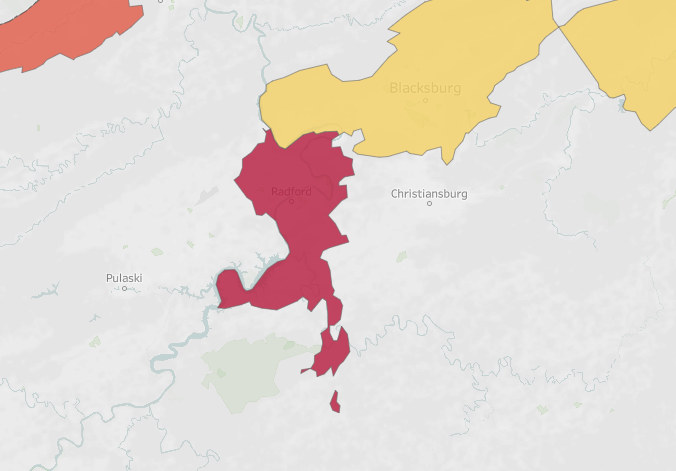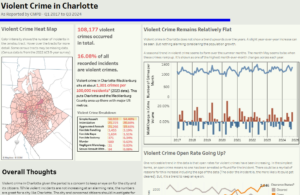Disclaimer: All claims made in this article are based on EPA resources and data. Nothing mentioned in any part of this article is meant for reporting purposes and is solely meant for personal education. For specific details about the Toxic Release Inventory data, please visit EPA.gov.
Imagine a nasty facility along the water pumping out toxic sludge. Awful right? Well, the stereotypical image you’re imagining may not be as common nowadays. But water pollution still legally happens on various scales across the United States. It’s something I most or less understood as an infrequent activity. It may very well be so, but companies today are still dumping millions of pounds of chemicals into our waterways.
Fortunately, the Environmental Protection Agency requires organizations to report the release of these toxic chemicals. That data is then made public via the Toxic Release Inventory. While I would explain the specifics of what this inventory is and how it came to be, I highly recommend you discover that via the source. That will ensure full clarity on what this does and does not cover.
However, I will give you a quick rundown. Essentially, facilities private or public that meet certain criteria must report on the amount of toxic chemicals released or disposed of per the specifications of the EPA. These reports are then compiled into data that is released yearly as the Toxic Release Inventory. It’s not all bad news, however. Facilities must also report on activities they take to mitigate the effects of these released chemicals, such as recycling or treatment. Regardless, this data does give us stewards of the environment a glimpse into the pollution caused by these facilities.
My Analysis of the Toxic Release Inventory
Besides the outdoors, I’ve developed a love for data. So, when I have the opportunity to combine them plus tell an important conservation story, I will not say no. I decided I wanted to build a dashboard that can help anyone understand some high-level aspects of the Toxic Release Inventory and self-serve to see what’s happening in their area. So I built this Tableau Public dashboard called “Chemicals in the Water”.
I embedded the dashboard below, but feel free to view it on Tableau Public, where I published it. It will be a better user experience overall. Also, mobile users beware. This dashboard is best viewed on a laptop/desktop computer. But don’t fret! Keep reading to learn some insights from my dashboard. Below, I’ll explain how the dashboard works.
Looking at the dashboard, you’re greeted by four visuals. The big number on the left is the total amount, in pounds, of chemicals released in the water per the 2022 Toxic Release Inventory data. Next to that is the zip code with the largest amount released within its boundaries in 2022. Stay tuned for a deeper analysis later on in this read.
You can hover over the zip code shape to learn more about the specifics. The next two bar graphs on the right represent the most affected watersheds in the United States and the top polluters by the parent company. Hovering over each bar will give you the details.
Below the four graphics are the meat and potatoes of this dashboard. The large map shows all the zip codes in the United States affected by 0.5 pounds or more of water pollution in 2022. The filters to the left give you some control over where to focus. The map itself is color-coded: the deeper the red, the more pounds released.
I encourage you to do your analysis with the dashboard. Focus on your state and general area on the map. Learn more about your watershed as well. It may (hopefully) not show up on my top list, but there is a wealth of information online about most of the watersheds in the United States. Below I will present some of my analysis from this dashboard. Focusing on my area, the North Carolina Piedmont, and the zip code with the most surface water pollution.
America’s Most Toxic Zip Code
When looking at the dashboard, you’ll notice that the zip code 24141 contained the largest release of toxic chemicals in 2022. Located in rural western Virginia, a short distance away from Blacksburg. Home to small towns such as Radford and Fairlawn, it would at first seem as a mystery why this place ranks number one. But, located within the zip code is the Radford Army Ammunition Plant. This massive facility spans over 4,000 acres intertwined around the New River. Suddenly, it’s quite clear why zip code 24141 is ranked where it is.

According to the data, over 16.2 million pounds of toxic chemicals were released at the Radford Army Ammunition Plant via the water in 2022. This is an absolutely staggering amount to imagine, but given the scale of this facility, it would make sense. The vast majority of those chemicals are nitrates. Nitrates are compounds made of nitrogen and oxygen, commonly found in fertilizer, explosives, and many other products. Given the nature of the Radford Army Ammunition Plant, this would add up. You’ll notice a trend in the data: nitrates are the most commonly released chemical across the country. Making up roughly 192 million pounds of the 213 million pounds in total released chemicals.
Nitrates aren’t toxic like what you might assume. Plants and animals need nitrates to function just like other essential compounds But, in the seemingly large quantities released, it can alter the balance of the ecosystems these chemicals end up in. A common outcome is excessive aquatic plant growth, such as an algae bloom. You can read more here.
Besides Nitrates, other chemicals such as ammonia, nitroglycerin, lead compounds, and copper compounds were reported. Some of these chemicals can be toxic to the environment. While the amount released was much lower than the Nitrates reported, their size is still significant. For example, over 22,000 pounds of nitroglycerin was reported to be released.
Toxic Water Pollution in North Carolina
Across North Carolina, toxic chemicals have been released in varying quantities along the entire state. The largest concentrations exist in the eastern part of the state by various food companies. Nitrates again make the top spot for these zip codes. Some of the largest releases happened in 28392 and 27849.

Looking at the North Carolina Piedmont area, most chemicals released are fairly small. In the immediate Charlotte metro, it is mostly small quantities of zinc, copper, and lead. However, there are some notable large releases:
- 1,000 pounds of copper/copper compounds in zip code 28682
- 750 pounds of zinc compounds in zip code 28075
- 820 pounds of ethylene glycol in zip code 28073
It’s hard to determine the specific environmental impact of these chemical releases, but it certainly is not positive for the environment. The one that draws the most attention to me is the release in zip code 28682. This is located right on the shores of Lame Norman. Given the responsible parent company is Duke Energy, it could very well be in the lake at their Marshall Steam Plant located along the Lake Norman shore. This release would concern me the most since Lake Norman is used by numerous people throughout the year. Furthermore, being part of the Catawba River chain could affect the entire Catawba River down to the ocean.
Analyze Your Home Zip Code
I designed this dashboard to be a tool for you to use. See if you can find your zip code on the map. I hope you can’t, but you could very well live near polluted waters. Get to know your watersheds as well. Visit USGS.gov to learn more about how watersheds work and about the one you live in. Let it bring you closer to nature in your backyard.
I also encourage you to learn more about the Toxic Release Inventory. The data presented in my dashboard is purely surface water pollution. Many other forms of disposal happen at facilities across the country. The EPA has its own tool you can use to explore the Toxic Release Inventory data. This is another great method to educate yourself.
As far as my dashboard, feel free to let me know your thoughts. I made my best attempt to turn this data into something useful and easily consumable. However, I believe there are always improvements I could make. That could materialize into other visualizations of this environmental data. So, stay tuned as I keep up the work here at Just Chillin Outdoors.




Leave a Reply